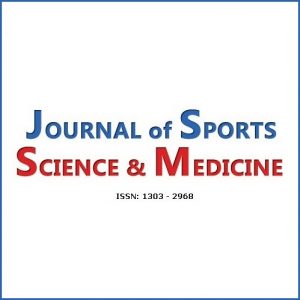Publications

Effects of Foam Rolling Duration on Tissue Stiffness and Perfusion: A Randomized Cross-Over Trial
Authors: Jan Schroeder 1, Jan Wilke 2, Karsten Hollander 3
Affiliations:
- University of Hamburg, Faculty of Psychology and Human Movement Science, Department of Sports and Exercise Medicine, Hamburg, Germany
- Goethe University Frankfurt, Institute of Occupational, Social and Environmental Medicine, Frankfurt, Germany
- MSH Medical School Hamburg, Institute of Interdisciplinary Exercise Science and Sports Medicine, Hamburg, Germany
Journal: Journal of Sports Science & Medicine - August 2021, Volume 20, Pages 626-634 (DOI: 10.52082/jssm.2021.626)
-
Field & Applications:
- Medical
- Treatment evaluation
- Physiotherapy
- Musculoskeletal health
- Musculoskeletal rehabilitation
- Injury prevention
- There is a lack of evidence regarding the dose-response conditions and the according underlying mechanisms of foam rolling for practical applications.
- A two minutes duration (combined in two sets of 60 seconds) was enough to reduce tissue stiffness of the anterior thigh in healthy active adults, while increases of tissue perfusion needed longer foam rolling duration
- The observed effects may help to constitute practical training recommendations in order to increase sport-specific warm-up purposes.
Despite its beneficial effects on flexibility and muscle soreness, there is still conflicting evidence regarding dose-response relationships and underlying mechanisms of foam rolling (FR).
This study aimed to investigate the impact of different FR protocols on tissue perfusion and tissue stiffness. In a randomized crossover trial, two FR protocols (2×1 min, 2×3 min) were applied to the right anterior thigh of twenty healthy volunteers (11 females, 25 ± 4 years). Tissue perfusion (near infrared spectroscopy, NIRS) and stiffness (Tensiomyography, TMG and Myotonometry, MMT) were assessed before and after FR application. Variance analyses revealed a significant interaction of FR duration and tissue perfusion (F[1,19] = 7.098, p = 0.015). Local blood flow increased significantly from pre to post test (F[1,19] = 7.589, p = 0.013), being higher (Δ +9.7%) in the long-FR condition than in the short-FR condition (Δ +2.8%). Tissue stiffness (MMT) showed significant main effects for time (F[1,19] = 12.074, p = 0.003) and condition (F[1,19] = 7.165, p = 0.015) with decreases after short-FR (Δ -1.6%) and long-FR condition (Δ -1.9%). However, there was no time*dose-interaction (F[1,19] = 0.018, p = 0.895). No differences were found for TMG (p > 0.05). FR-induced changes failed to exceed the minimal detectable change threshold (MDC).
Our data suggest that increased blood flow and altered tissue stiffness may mediate the effects of FR although statistical MDC thresholds were not achieved. Longer FR durations seem to be more beneficial for perfusion which is of interest for exercise professionals designing warm-up and cool-down regimes. Further research is needed to understand probable effects on parasympathetic outcomes representing systemic physiological responses to locally applied FR stimulations.
Keywords: Musculoskeletal, exercise physiology, physiotherapy, relaxation, athletic training
Our data suggest that alterations of the treated tissues’stiffness and the local tissues’ perfusion may be assumed as underlying mechanisms of FR effects, although outcome changes did not exceed the respective statistical MDC thresholds. For practical applications, it was apparent that longer FR durations promoted pronounced increases of blood-flow, supporting ideas of a relevant dose-response dependency. Specifically, a total duration of two minutes (combined over two sets) seems to be enough for stiffness reducing warm-up purposes. Apart from additional varying combinations of dose-response conditions and cumulative effects of repeated sessions, further research is needed to understand probable effects on parasympathetic outcomes representing systemic physiological responses to locally applied FR stimulations.


